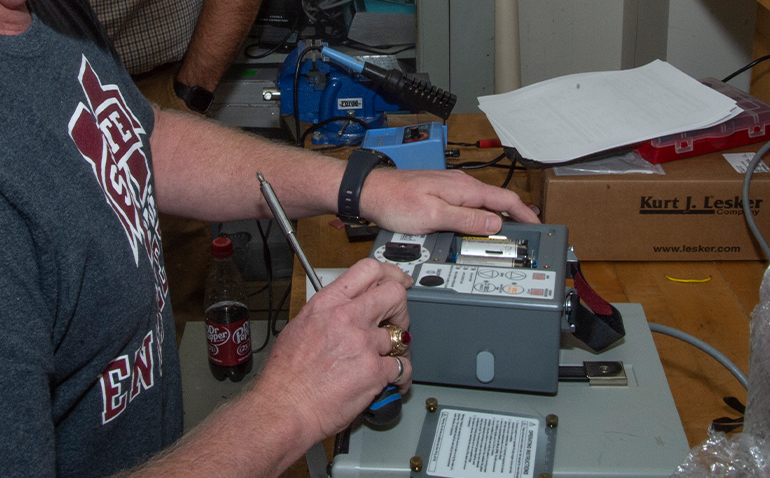
MSU Engineers Convert Venilators in Response to the Covid-19 Pandemic
Mississippi State University engineers were able to convert more than 550 ventilators from battery to AC power so they can be used in the state’s response to the COVID-19 pandemic.
State’s Paul B. Jacob High Voltage Laboratory was tapped by the Institutions for Higher Learning to convert the battery-powered ventilators, which are utilized in emergencies with power outages such as hurricanes, to AC power. This will allow hospitals to plug them into the wall and use them to treat patients at the University of Mississippi Medical Center in Jackson.
The ventilators, once converted, can be used either on battery power or plugged into a wall socket on AC power.
The work was done at the High Voltage Lab (263 units) and at Taylor Machine Works in Louisville (288 units). Taylor Machine also assisted MSU in sourcing parts for the ventilators.
According to David Wallace, the lab manager, it took about three minutes to convert each ventilator to AC power once the process was up and running. He also said the university hasn’t received any requests from outside Mississippi for information about the conversion process pioneered at MSU.
In Mississippi, there are 2,003 cases of COVID-19 and 67 deaths as of April 7th.
“I am proud that our talented researchers can put their expertise to use as Mississippi continues the battle against COVID-19,” said MSU President Mark E. Keenum in a university news release. “These ventilators will allow our state’s outstanding medical professionals to save more lives and provide needed care, and I appreciate the team at our High Voltage Lab working to put these to use as fast as possible. MSU stands ready to assist in this fight in any way we can.”
The High Voltage Laboratory is part of the Department of the Electrical and Computer Engineering at MSU. The lab was built in 1977 and is the largest high voltage laboratory at a university in North America.
To sign up for updates from BPF, subscribe here.
